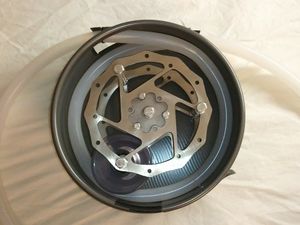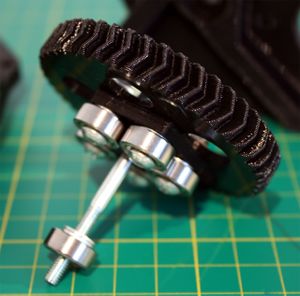Peristaltic Pumps
Peristaltic Pumps are of Positive Displacement Pumps used for pumping a variety of fluids. The fluid is contained within a flexible tube fitted inside a circular pump casing . A rotor with a number of rollers, shoes, wipers, or lobes attached to the external circumference of the rotor compresses the flexible tube. As the rotor turns, the part of tube under compression is pinched closed or occludes thus forcing the fluid to be pumped to move through the tube. Additionally, as the tube opens to its natural state after the passing of the cam fluid flow is induced to the pump. This process is called peristalsis and is used in many biological systems such as thegastrointestinal tract. Typically, there will be two or more rollers, or wipers, occluding the tube, trapping between them a body of fluid. The body of fluid is then transported, at ambient pressure, toward the pump outlet. Peristaltic pumps may run continuously, or they may be indexed through partial revolutions to deliver smaller amounts of fluid.
Applications
Peristaltic pumps are typically used to pump clean or sterile or aggressive fluids because cross contamination with exposed pump components cannot occur. Some common applications include pumping for fluids through an infusion device, aggressive chemicals, high solids slurries and other materials where isolation of the product from the environment, and the environment from the product, are critical. It is also used in heart-lung machines to circulate blood during a bypass surgery as the pump does not cause significant hemolysis.
Peristaltic pumps are also used in a wide variety of industrial applications. Their unique design makes them especially suited to pumping abrasives and viscous fluids.`
Advantages
- No contamination. Because the only part of the pump in contact with the fluid being pumped is the interior of the tube, it is easy to sterilize and clean the inside surfaces of the pump.
- Low maintenance needs. Their lack of valves, seals and glands makes them comparatively inexpensive to maintain.
- They are able to handle slurries, viscous, shear-sensitive and aggressive fluids.
- Pump design prevents backflow and syphoning without valves.
Disadvantages
- The flexible tubing will tend to degrade with time and require periodic replacement.
- The flow is pulsed, particularly at low rotational speeds. Therefore, these pumps are less suitable where a smooth consistent flow is required. An alternative type of positive displacement pumpshould then be considered.

